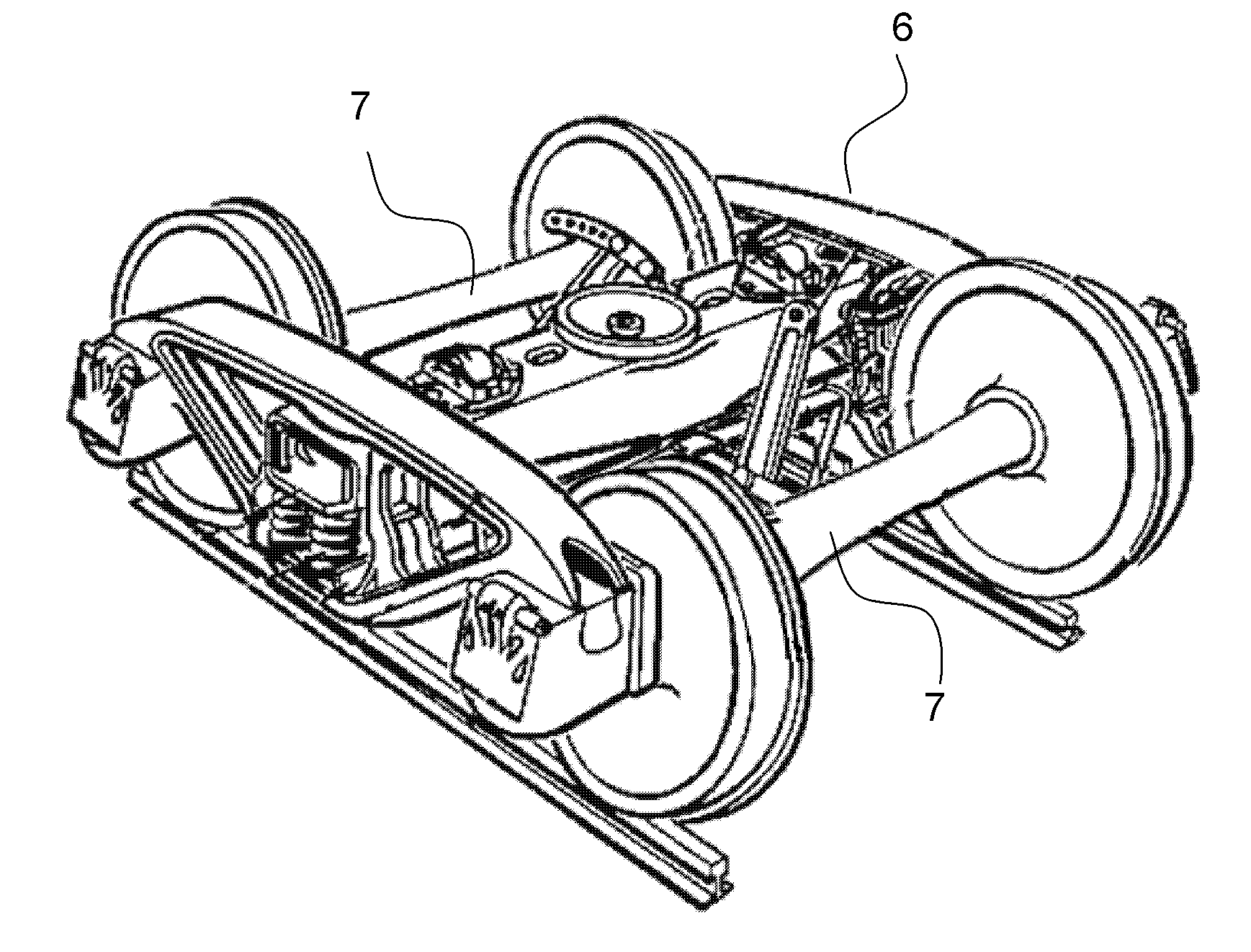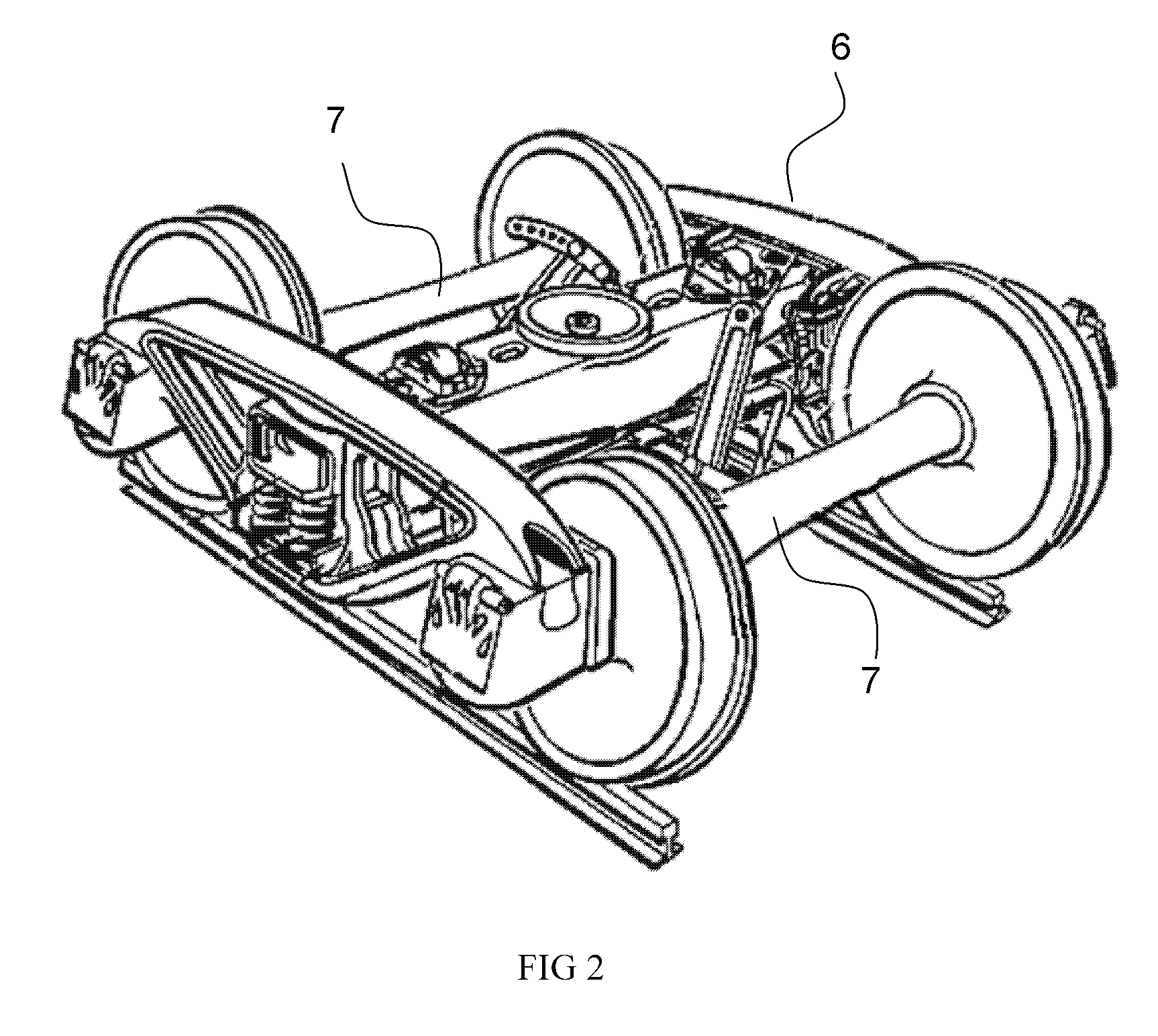Quasi self-contained energy storage and power supply system
- Summary
- Abstract
- Description
- Claims
- Application Information
AI Technical Summary
Benefits of technology
Problems solved by technology
Method used
Image
Examples
example 1
Traditional Train Modified According to the Invention The train consists of a locomotive and 30 freight cars as represented in FIG. 5.
[0179]The locomotive is dimensioned for a maximum power of 3000 hp. The 30 cars are equipped with a system according to the invention on each of their two bogies, for a total of 60 systems also being able to produce a maximum power of 3000 hp (60×50 hp); 50 hp being the unitary power of the system according to the used invention.
[0180]The system according to the invention used to equip the bogies consists of an energy storage module of polymeric lithium metal battery type marketed by the Batscap company under the trade name “Batscap battery”, of a converter of the semiconductive type such as an IGBT marketed by the Enova company under the trade name “Inverter 60”, of an AC type motor / generator marketed by the Enova company under the trade name “EDU-60”, of an electronic controller with microprocessor similar to those used in the industry of electrical...
example 2
Use of the System of the Invention in a Marshalling Yard
[0183]A second example relates to the use of the system in switch yards, where the cars are divided and assembled into convoys by small power locomotives. Let us imagine that the train to displace contains 10 cars equipped with the invention on each one of their bogies: there are 20 bogies (10×2) each being able to provide 50 hp, therefore a maximum total power of 1000 hp (20×50). This power is very largely sufficient to displace the train at low speeds without any need to use the power of the locomotive, which is a reduction of the consumption of 100% in this case. One can thus carry out in certain cases the switching of cars without any locomotive.
[0184]Several other combinations can be explored, one of the main advantages of the invention being the possibility of installing it on a more or less high proportion of cars or trailers without any other consequence than the proportional increase or reduction in the available addit...
PUM
 Login to View More
Login to View More Abstract
Description
Claims
Application Information
 Login to View More
Login to View More - R&D
- Intellectual Property
- Life Sciences
- Materials
- Tech Scout
- Unparalleled Data Quality
- Higher Quality Content
- 60% Fewer Hallucinations
Browse by: Latest US Patents, China's latest patents, Technical Efficacy Thesaurus, Application Domain, Technology Topic, Popular Technical Reports.
© 2025 PatSnap. All rights reserved.Legal|Privacy policy|Modern Slavery Act Transparency Statement|Sitemap|About US| Contact US: help@patsnap.com



